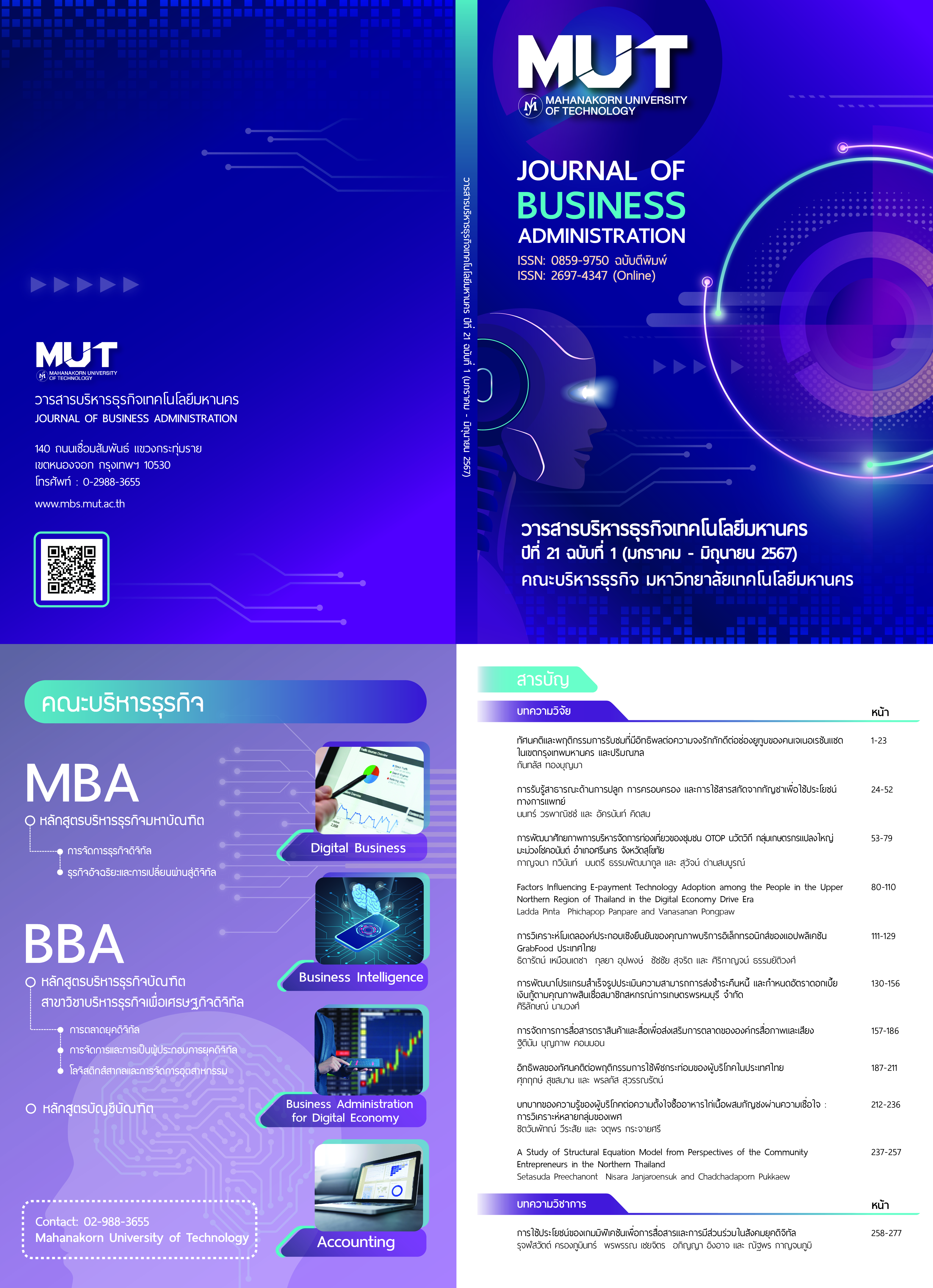Brand Communication and Promotional Media Management for Audiovisual Media Organizations
Keywords:
Brand Communication, Media Management, Media Industry, Promotion, Promotional Media, Promotional Spot, สปอตโปรโมทAbstract
This research article, Brand Communication and Promotional Media Management for Audiovisual Media Organizations, aims to study strategies of promotional media and brand communications for audiovisual media organizations and management of promotional media and brand communications for audiovisual media organizations. Using a qualitative research method, the research was conducted through interviews with key informants who have been working within the promotional media field in audiovisual media organizations which have been operating for at least five years. The total number of key informants was twenty, divided into two groups comprising of ten media executives and ten media officers. The study found that media organizations in this study have placed importance on promotional media management and the incorporation of brand communication through promotional media. Promotional spots are the most popular tool of promotional media; main elements usually focus on presenting stories, genre, and stars; and serving as a tool to promote ideas, contents, and services to the consumers. The role of promotional media is to link the target audiences and influence them to support media products and services. In terms of incorporating brand communication through promotional media, the study showed that a clear strategy is still lacking. In managing promotional media works and brand communication, the organizations only provided broad principles, with the guidelines emphasizing elements of the use of colors, shapes and lines that can be linked back to the corporate brands, leaving the practitioners to consider how to apply these in practice. Management and creative design of promotional media requires an integration of marketing perspectives, corporate communications, and the art of media production. Under the media convergent landscape, the forms and formats of presentation and cultural meanings of promotional media have altered. Therefore, in managing promotional media and brand communication of audiovisual media organizations, the content strategies must be congruent with the channels and platforms of the distribution. The best tool of promotional media is considered to be the one which is most appropriate for the target group of the organization.
References
Bellamy, R. V. and Traudt, P.J. 2014. Television Branding as Promotion. In Research in Media Promotion. S.T. Eastman. New York: Routledge.
Borchers, T. 2012. Persuasion in the Media Age. New York: Waveland Press.
Caldwell, J. T. 2008. Production Culture: Industrial Self-reflexivity and Critical Practice in Film and Television. Durham: Duke University Press.
Chan-Olmsted, S. 2006. Competitive Strategy for Media Firms: Strategic and Brand Management in Changing Media Markets. London: Routledge.
Chan-Olmsted, S. M. and Shay, R. 2015. Media Branding 3.0: From Media Brands to Branded Entertainment and Information. In Siegert, G., Förster, K., Chan- Olmsted, S. M. and M. Ots. Handbook of Media Branding. Cham: Springer.
Davis, A. 2013. Promotional Cultures. Cambridge: Polity.
Gad, T. 2016. 4-D Branding: Cracking the Corporate Code of the Network Economy. New York: Financial Times Prentice Hall.
Grainge, P. and Johnson, C. 2015. Promotional Screen Industries. London: Routledge.
Gray, J. 2010. Show Sold Separately: Promos, Spoilers, and Other Media Paratexts.
New York: NYU Press.
Kernan, L. 2004. Coming Attractions: Reading American Movie Trailers. Austin: University of Texas Press.
Kotler, P. and Armstrong, G. 2010. Principle of Marketing. Upper Saddle River: New Jersey: Prentice-Hall.
McAllister, M. P. and West, E. 2013. The Routledge Companion to Advertising and Promotional Culture. London: Routledge.
Mohr, J.J., Sengupta, S. and Slater, S. 2009. Marketing of High-Technology Products and Innovations. New Jersey: Prentice Hall.
Powell, H. 2013. Promotional Culture and Convergence: Markets, Method and Media. London: Routledge.
Additional Files
Published
Issue
Section
License

This work is licensed under a Creative Commons Attribution-NonCommercial-NoDerivatives 4.0 International License.
ข้อความ ข้อคิดเห็น ข้อมูล เนื้อหา รูปภาพ แผนภูมิ แผนผัง เป็นต้น ที่ปรากฏและแสดงในบทความต่างๆ ในวารสารบริหารธุรกิจเทคโนโลยีมหานคร ถือเป็นความรับผิดชอบโดยตรงของผู้เขียนบทความนั้นๆ มิใช่เป็นความรับผิดชอบใดๆ ของวารสารบริหารธุรกิจเทคโนโลยีมหานคร และมหาวิทยาลัยเทคโนโลยีมหานคร
บทความที่ตีพิมพ์ในวารสารบริหารธุรกิจเทคโนโลยีมหานคร ถือเป็นลิขสิทธิ์เฉพาะของคณะบริหารธุรกิจ มหาวิทยาลัยเทคโนโลยีมหานคร หากบุคคลหรือหน่วยงานใดต้องการนำทั้งหมดหรือส่วนใดส่วนหนึ่งไปเผยแพร่ต่อหรือเพื่อกระทำการใดๆ จะต้องได้รับการอนุญาตเป็นลายลักษณ์อักษรจากคณะบริหารธุรกิจ มหาวิทยาลัยเทคโนโลยีมหานครก่อนเท่านั้น


